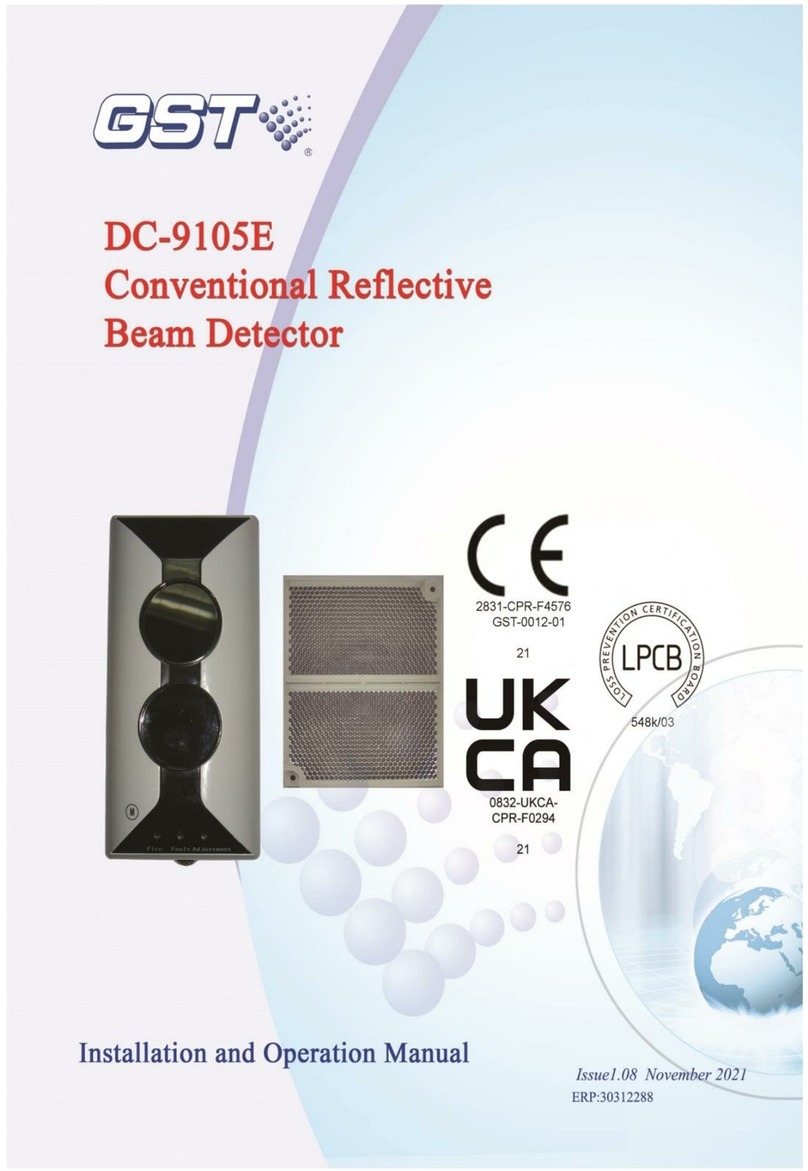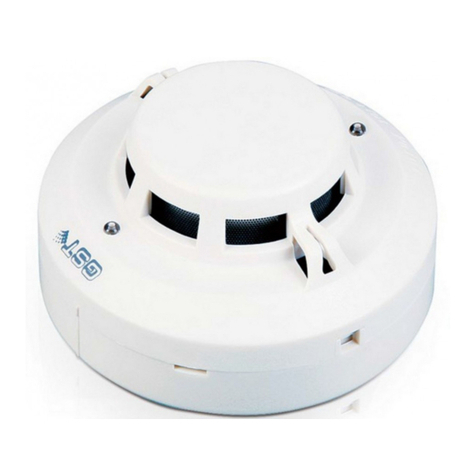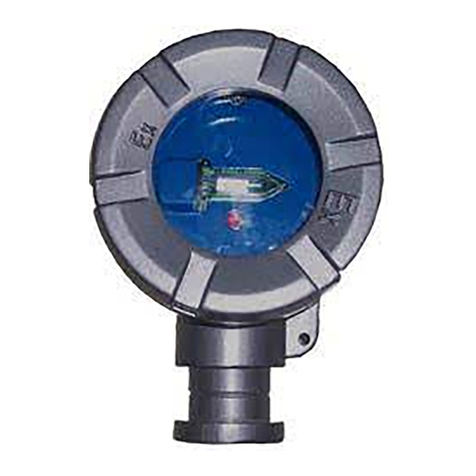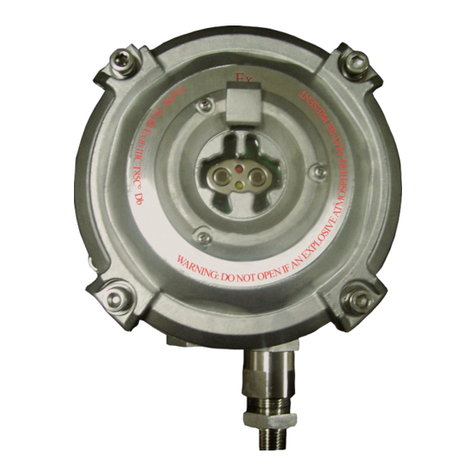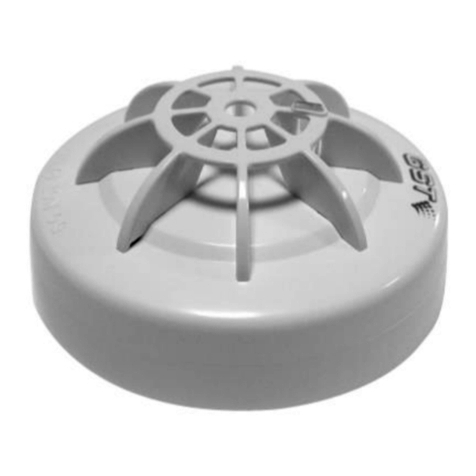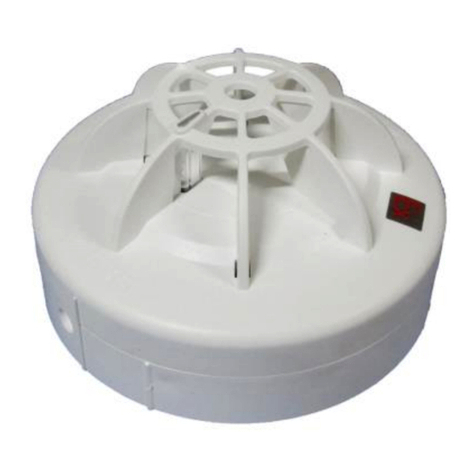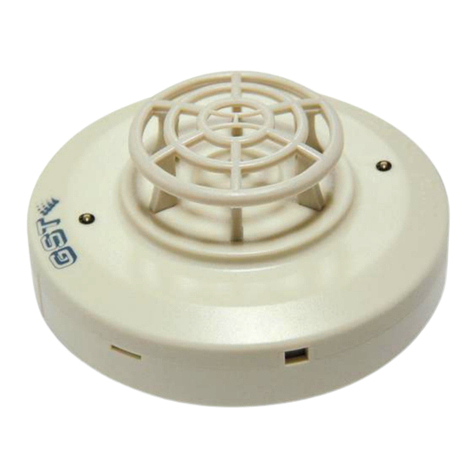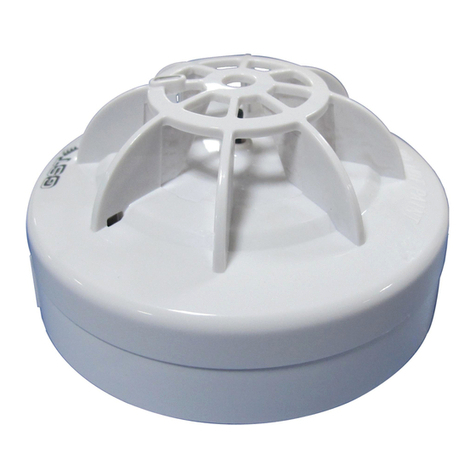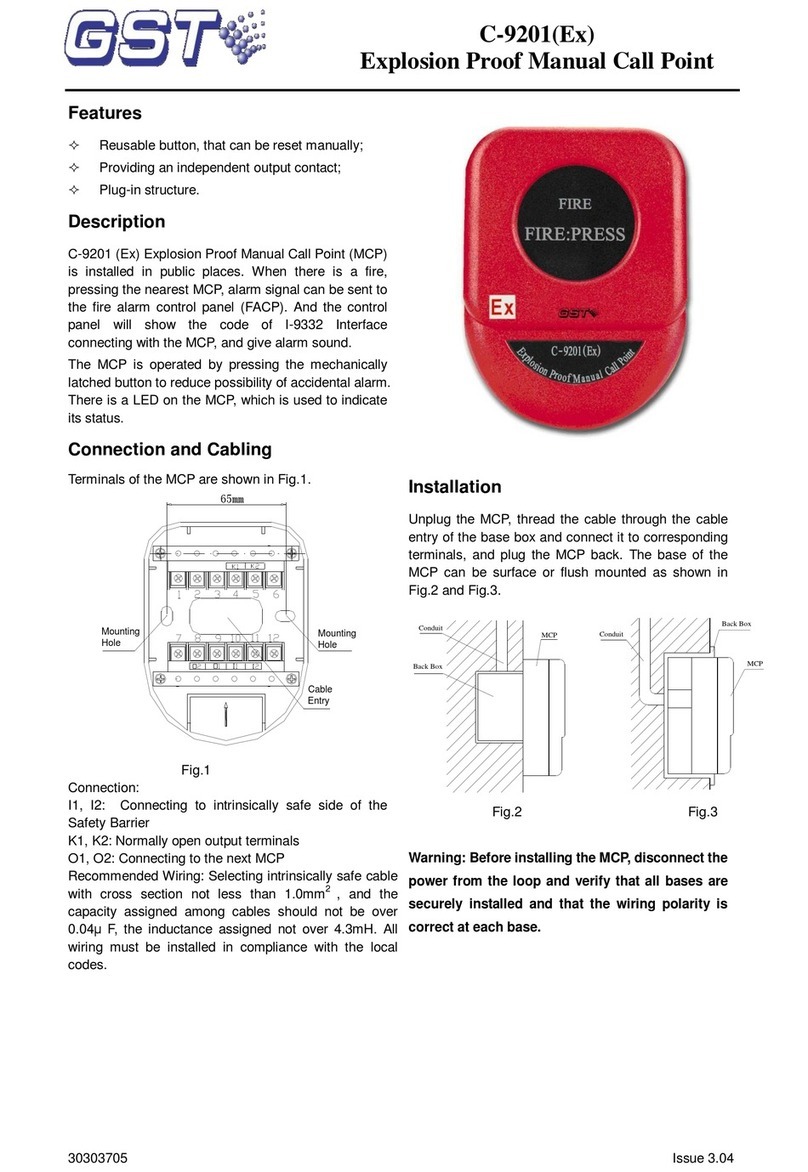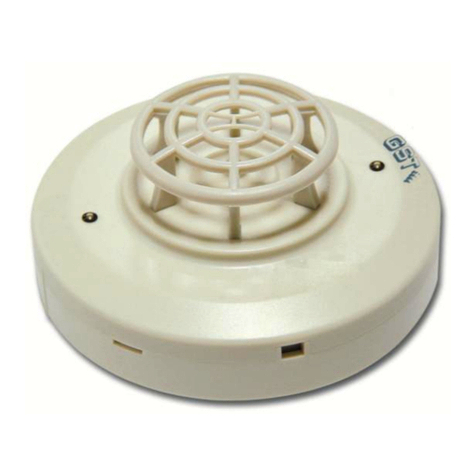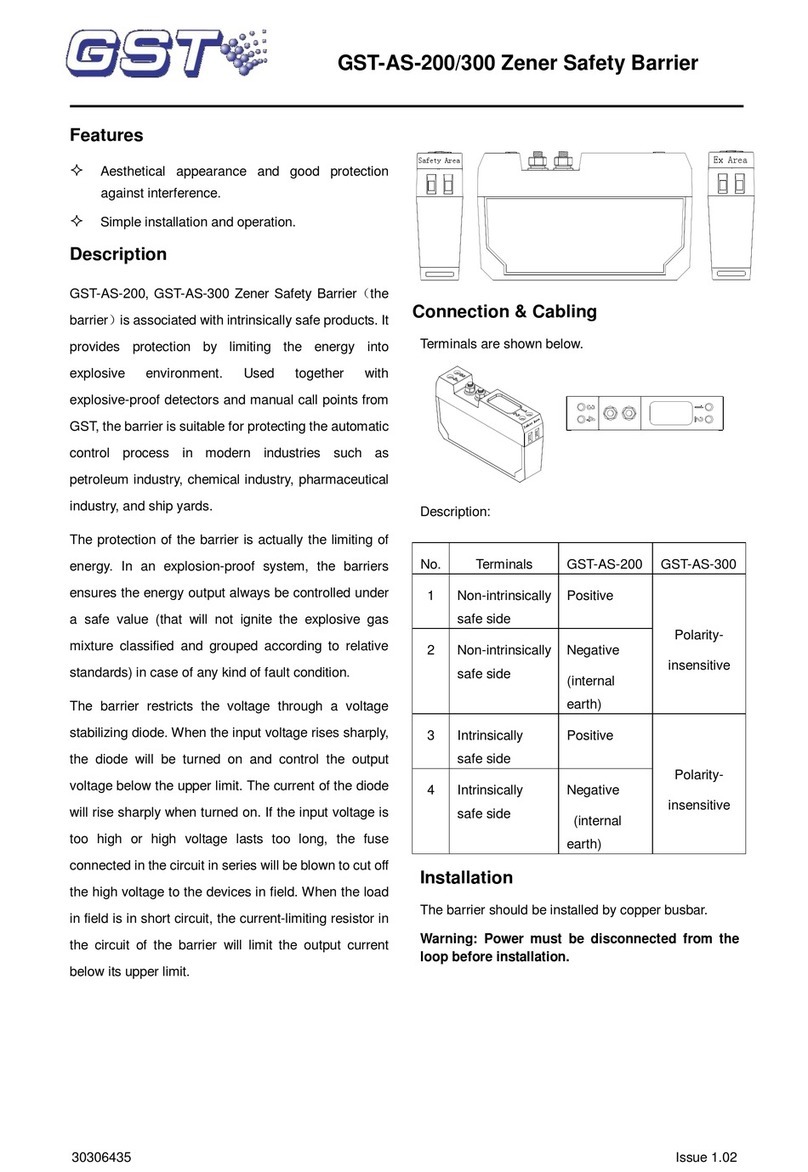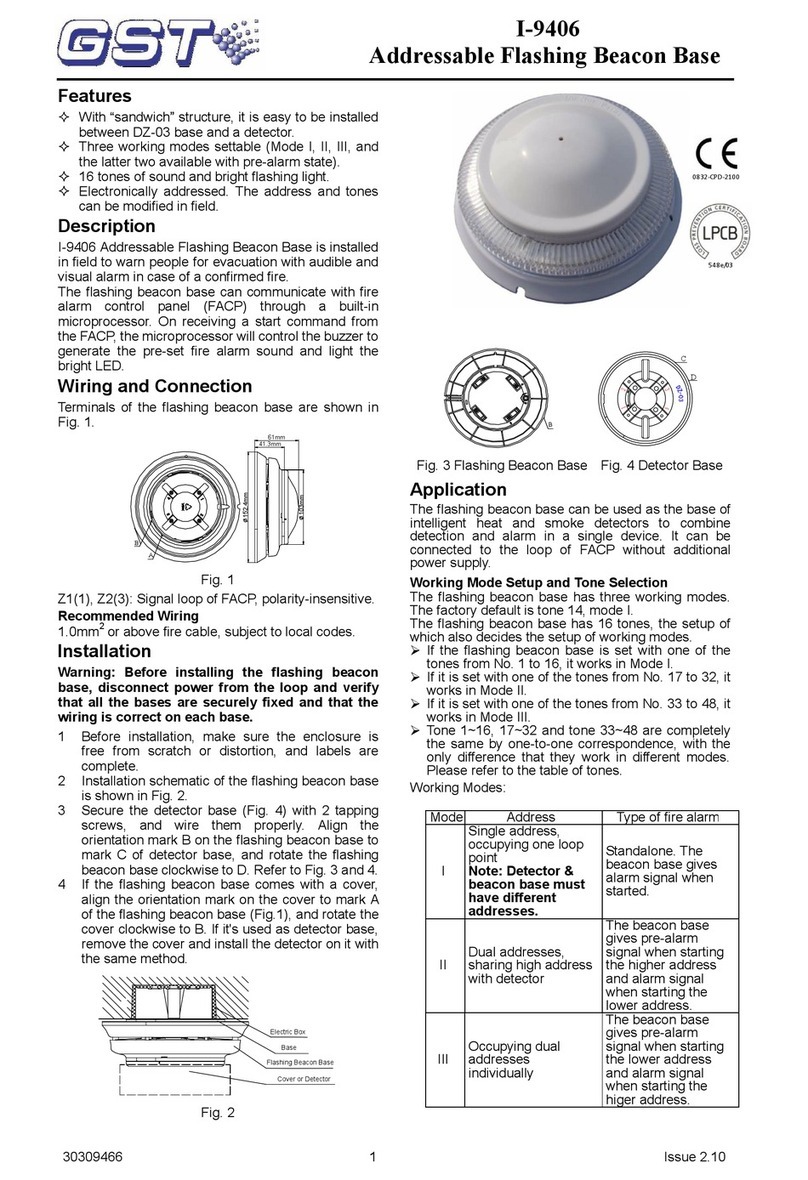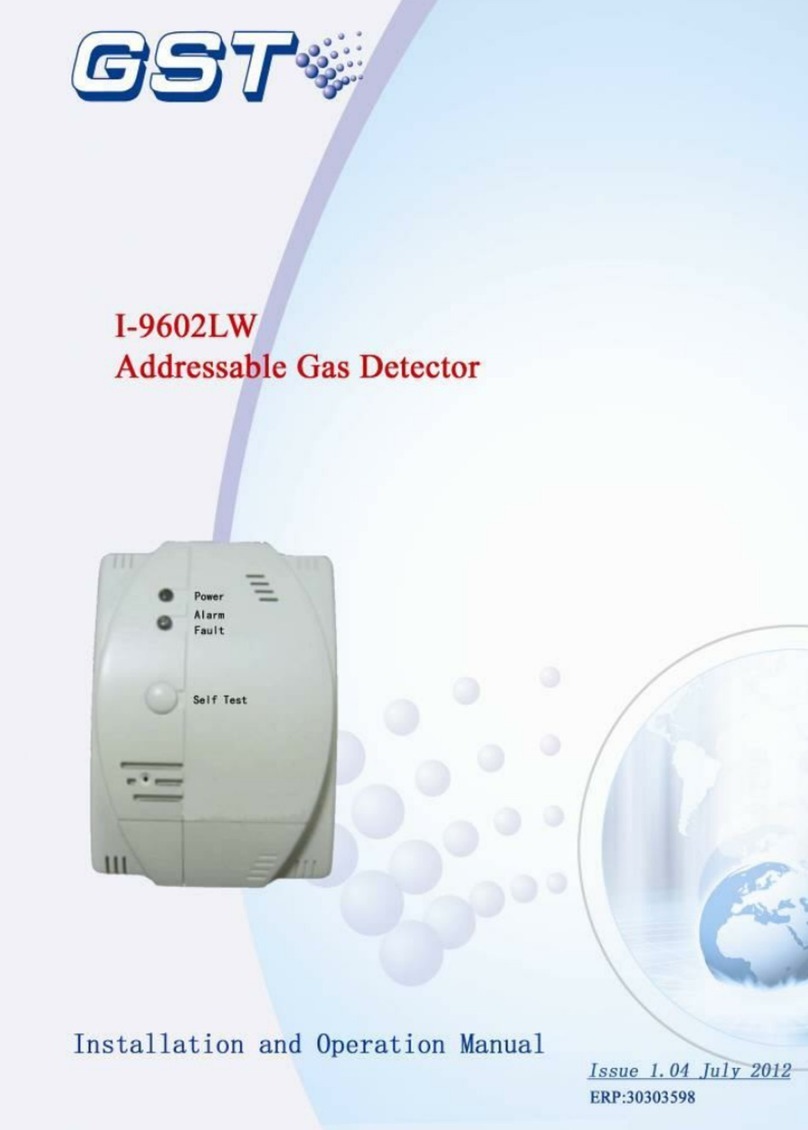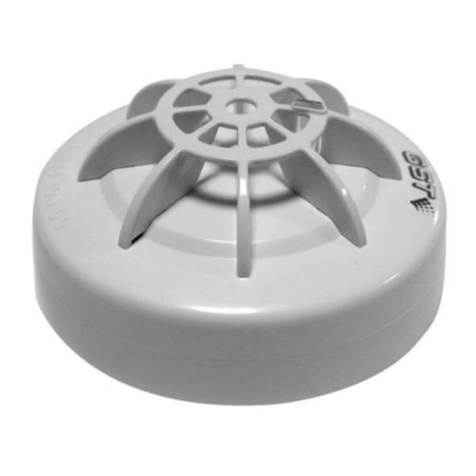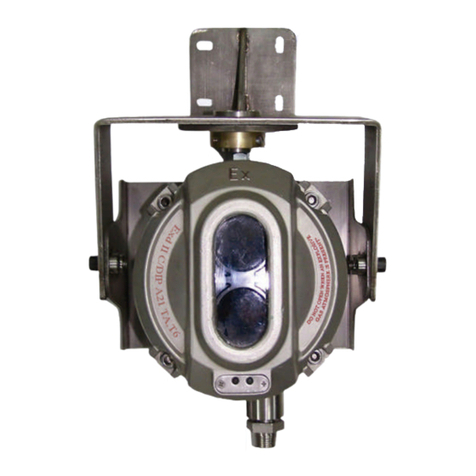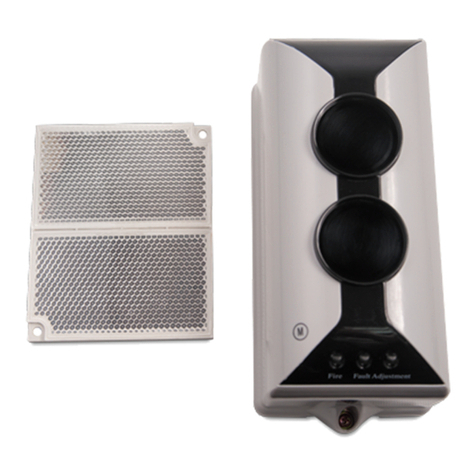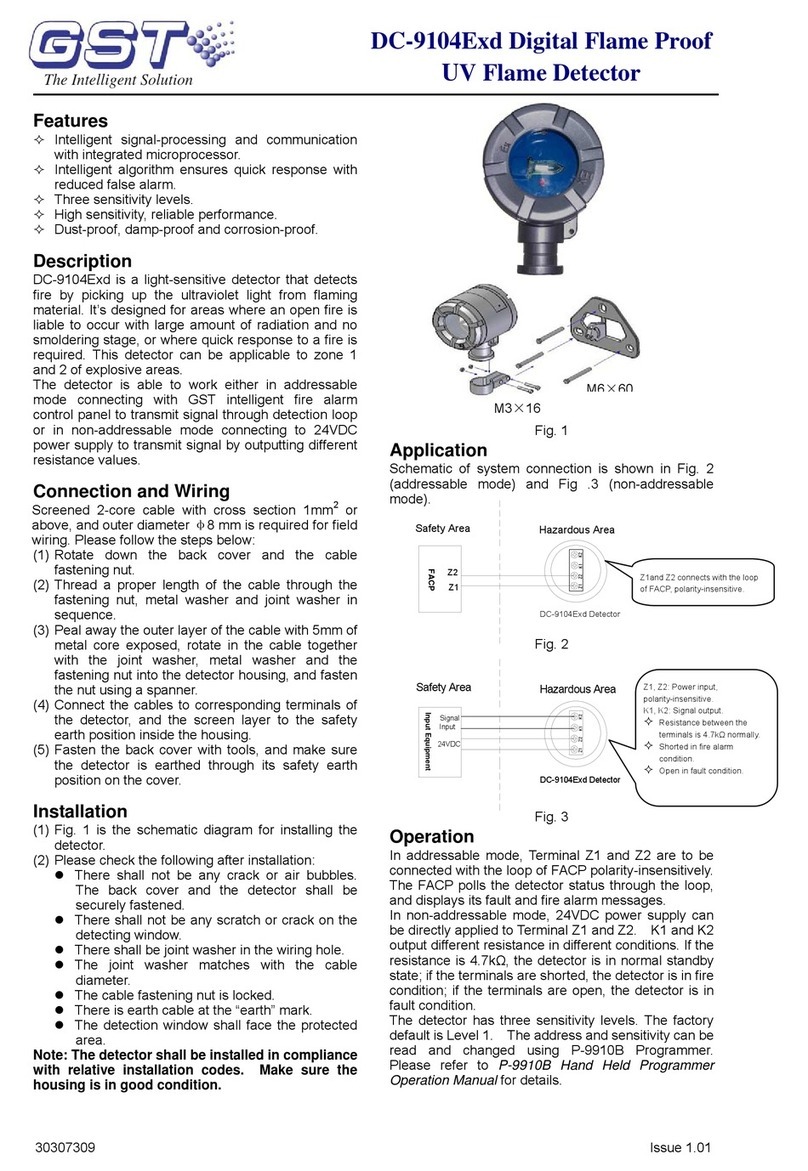I-9105R
Intelligent Reflective Beam Detector
Installation and Operation Manual The Intelligent Solution
1
I Overview
I-9105R Intelligent Reflective Beam detector (the detector) is an
addressable reflective infrared beam smoke detector that has two
signal output ways: loop output and contact output. When the detector is
connected with GST fire alarm control panel directly, state information
will be transmitted through loop between the detector and the control
panel. The detector can be programmed by GST programmer. Code
range is within 1~242. When the detector is not connected with the
control panel, fire and fault information can be transmitted by contacts.
The detector must be used together with a reflector. The number of
reflector(s) to be used (one or four) depends on the distance from the
detector.
With excellent built-in microprocessor, the detector has strong ability of
analysis and judgment. The detector can carry out system adjustment,
compensation of variation of ambient data, and judgment of fire and
fault through fixed algorithm. With new and reasonable design,
esthetical pleasing, flexible judgment and alignment method, it’s easy to
install and adjust. The sensitivity of the detector can be set through
hand held programmer in field, decreasing the demand for cleanliness
of field conditions, and enlarging application areas.
The detector is applicable to historical buildings, warehouses, large
storages, shopping malls, leisure centers, exhibition halls, hotel lobbies,
printing houses, clothing factories, museums and prisons, as well as
places where slight smoke particles.
II Features
1. Wide operating voltage range, big monitoring areas.
2. Combination of the emitting and receiving part makes mounting
easy and optical pathway accurate.






